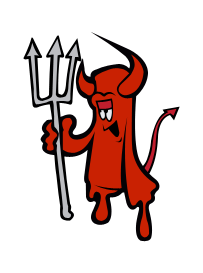lynching in my town
Posted Mar 2, 2011 by anonymous | 140 views | 0 comments
The lynching of Sam Hose (sometimes erroneously called Sam Holt) in Newnan, Georgia involved a murder prompted by a quarrel over wages. White folks believed that Hose, a laborer on Alfred Cranford's farm, had split open the skull of the respected white farmer with an ax and then injured his children and raped his wife near where the bleeding corpse lay. The alleged crimes, the chase, and the lynching occurred in and around places like Palmetto, Newnan, and Griffin -- small southern towns like any other within forty miles of Atlanta. Easy access to train and telegraph lines ensured that the lynching of Hose would be an 'event' not just in the rural Georgia Piedmont but in the self-proclaimed capital of the New South as well. Local and regional newspapers took over the publicity, promotion, and sale of the event with the kind of sensationalized narrative pattern that would come to dominate the reporting of spectacle lynchings up until the 1940s. DETERMINED MOB AFTER HOSE, HE WILL BE LYNCHED IF CAUGHT began the story in the Atlanta Constitution on April 14, 1899. Information about Cranford's demise had been supplied to the media by Mrs. Cranford, the wife of the murdered man and the alleged rape victim. She demanded an active role in planning the lynching, expressing a desire to witness Hose's torture and death and a preference for a slow burning. As expressed, her story was contradictory -- she claimed to have tricked the 'stupid' Negro with a Confederate bill when he tried to 'rob her' after arguing about wages due him from her husband. When Hose was caught, and after the lynching had taken place, another local newspaper printed the details: 'In the presence of nearly 2000 people, who sent aloft yells of defiance and shouts of joy, Sam Hose was burned at the stake in a public road. Before the torch was applied to the pyre, the Negro was deprived of his ears, fingers, and other portions of his body with surprising fortitude. Before the body was cool, it was cut to pieces, the bones were crushed into small bits and even the tree upon which the wretch met his fate was torn up and disposed of as souvenirs. The Negro's heart was cut into small pieces, as was also his liver. Those unable to obtain the ghastly relics directly, paid more fortunate possessors extravagant sums for them. Small pieces of bone went for 25 cents and a bit of liver, crisply cooked, for 10 cents.'


No comments yet. Be first!